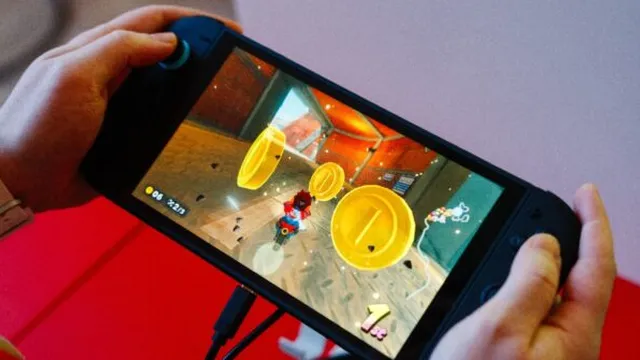
Nintendo launches Switch 2 at a high price amid strong demand
2025-06-03 10:15- Nintendo's new console, the Switch 2, will be released worldwide on June 5, 2025, with strong pre-order demand.
- The Switch 2 features a larger screen and enhanced processing power, priced at $449.99 in the US, which is significantly more than the original Switch.
- The launch's success hinges on consumer perception of value amidst high pricing and external economic factors like trade tariffs.
Express your sentiment!
Insights
In the United States, Nintendo is preparing to launch its new console, the Switch 2, on June 5, 2025. With strong early sales anticipated, the company is aiming to replicate the immense success of its predecessor, the original Switch, which sold 152 million units after its release in 2017. The upcoming console boasts enhanced features, including a larger screen and improved processing power, but comes with a high price tag of $449.99, indicating a price increase of over a third compared to the original Switch. Despite features like backward compatibility with original Switch games and some enhanced editions of popular titles, potential challenges for Nintendo include uncertainties regarding U.S. trade tariffs and the willingness of consumers to invest in a pricier device. Company president Shuntaro Furukawa has expressed caution over maintaining launch momentum, acknowledging that customer concerns about high prices may impact long-term sales. Furthermore, enhanced online functionalities are expected to attract gamers looking for streamlined experiences while playing and sharing games. Pre-orders for Switch 2 have shown robust demand, with supply issues being reported, especially in the Japanese market where interest is particularly high. However, despite this enthusiasm, several retailers were forced to cancel certain pre-orders due to stock limitations, leading to frustration among fans. In preparation for the launch, Nintendo’s app has been updated to support the new console. Industry analysts anticipate that the Switch 2 launch will be record-breaking in terms of first-day sales, suggesting that the device could become a significant contributor to Nintendo's financial success if it manages to sustain momentum. As the company continues navigating the complex factors influencing its market, including tariffs and expected consumer behavior, the response to the Switch 2 will be critical for its future strategies. Ultimately, the Nintendo Switch 2’s launch is not just another product release; it signifies a crucial phase for Nintendo as they look to maintain relevance and profitability in the competitive gaming market, showing adaptability to changing consumer expectations.
Contexts
The impact of US trade tariffs on the video games industry has been significant and multifaceted, affecting everything from production costs to pricing strategies and consumer behavior. Trade tariffs are taxes imposed by the government on imported goods, which can lead to increased costs for companies that rely on foreign manufacturers for their products. In the case of the video games industry, many gaming consoles, accessories, and game components are manufactured abroad, particularly in countries like China. As a result, the introduction of tariffs can increase the production costs for video game companies, leading them to either absorb these costs or pass them on to consumers in the form of higher prices. This potential price increase can have a ripple effect on sales and profitability, as higher costs may deter consumers from purchasing new games or consoles. Furthermore, the uncertainty surrounding tariffs can hinder companies' ability to plan for the future, leading to delays in product releases and reduced investment in innovation. Additionally, these trade tariffs may have broader implications for the global gaming market, especially as many major gaming companies operate on an international scale. The tariffs can result in retaliatory measures from other countries, leading to a potential trade war that could further complicate the supply chain. Such tensions may lead companies to reevaluate their global strategies, including sourcing and manufacturing locations. This can create instability in the market and make it more difficult for companies to compete on a level playing field. For smaller game developers and independent studios, the increased costs can be particularly burdensome, potentially stifling creativity and innovation in the industry. However, it's also important to acknowledge that the video game industry has demonstrated a remarkable ability to adapt to changing economic conditions. Some companies have sought to mitigate the impact of tariffs by diversifying their supply chains, seeking alternative manufacturers in regions not affected by tariffs, or investing in domestic production. Others have opted to introduce value-added products or services to justify higher prices, ensuring that they maintain their competitive edge. Additionally, shifts in consumer behavior can also create new opportunities, with the increasing popularity of digital downloads and subscriptions rendering physical productions less critical, thus partially offsetting the impact of tariffs on certain segments of the market. In conclusion, while the US trade tariffs have posed challenges for the video games industry, the sector has shown resilience and adaptability. Companies are navigating these complexities by exploring new strategies to mitigate risks associated with increased costs and market volatility. As the situation evolves, it will be crucial for industry stakeholders to monitor these developments closely, as they will shape not only the future of the video game industry in the United States but also its competitive positioning in the global marketplace.